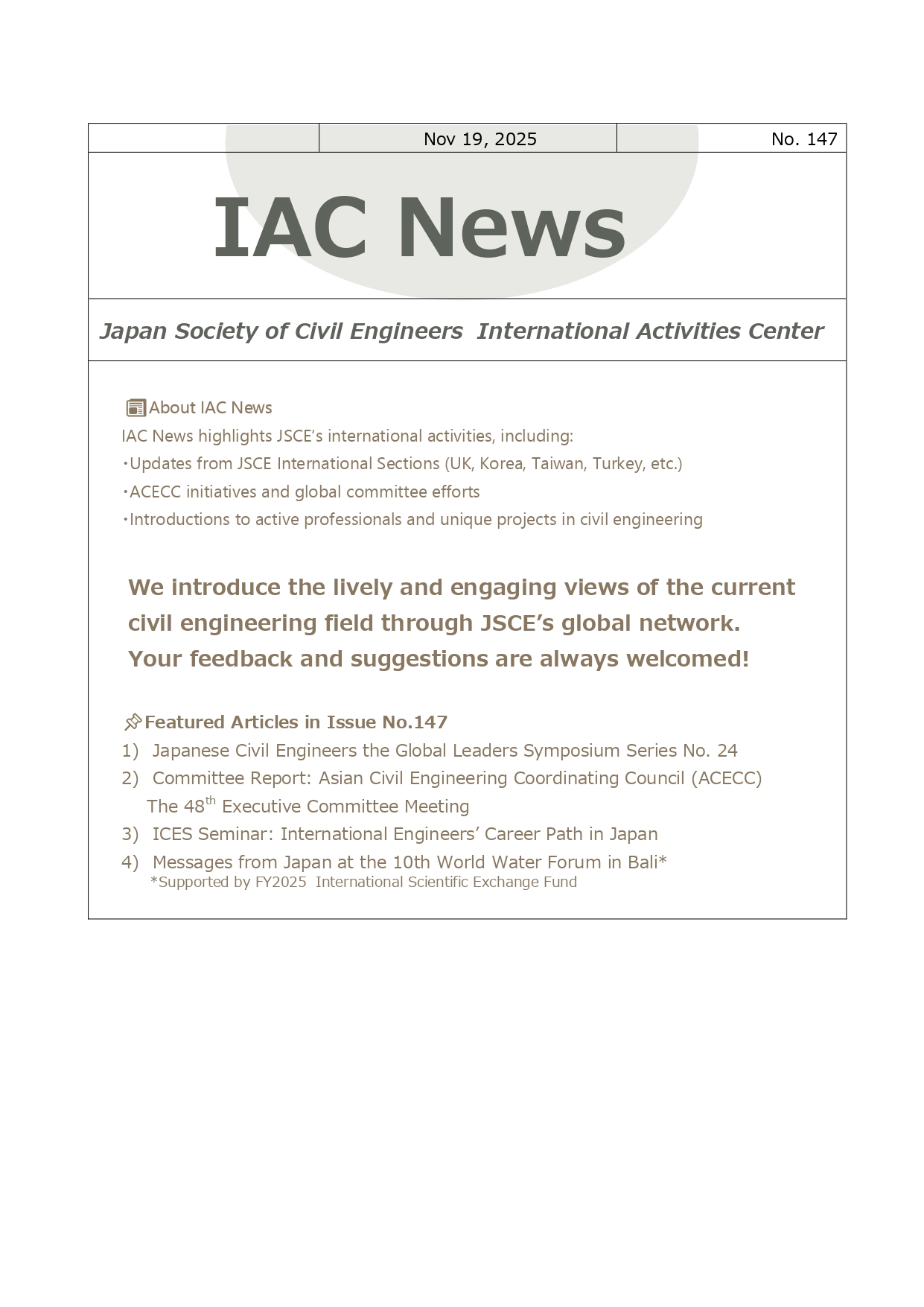2011 Innovative Technique Award
| 1.Development of a New Wet Curing Method (AQUA CURTAIN) for Concrete Structures. |
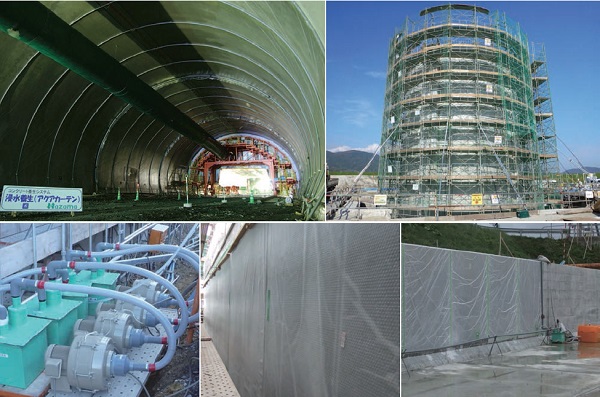 |
|
・Akira Shono (Hazama Corp.) |
| The new wet curing method which can supply water to vertical and arched surface after the formwork is removed has been developed. It is called “AQUA CURTAIN.” While it is not easy to supply moisture to those parts using the ordinarily curing method, this method can provide water curing. Through the new curing method “AQUA CURTAIN,” we have confirmed the improvement of cover concrete quality, especially carbonation resistance, freeze-thaw resistance and mass transportation effective to improve the durability of reinforced concrete structures. This method offers the sturdy, beautiful and durable constructions and is expected to expend broadly over the world. |
| 2.Development and Introduction of a Transportation Control System of Construction Waste with ETC (Electronic Toll Collection System) |
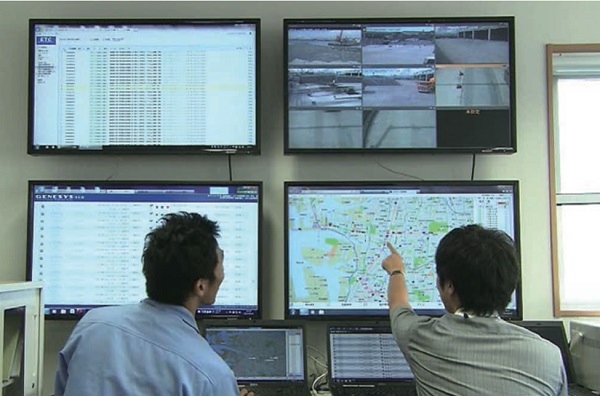 |
| ・Hirohisa Imagi (Kohsokudohro Development Co.,Ltd.) ・Yasuo Tomizawa (Hanshin Expressway Engineering Company Limited) ・Kazuhiro Kakei (Kohsokudohro Development Co.,Ltd.) ・Minoru Tatebe (Hanshin Expressway Company Limited) ・Kazuma Mizuta (ENVIRONMENTAL MANAGEMENT AND TECHNOLOGY CENTER) |
| This new system allows sludge to be recycled effectively Manifest, conventional paperwork to confirm the status of sludge treatment has provoked problems such as incomplete forms, falsifications and document losses. It also has placed a large burden on companies handling construction sludge; handing documents among them; preserving documents. This technology takes advantage of ETC wireless communication system, originally developed for toll roads, and linked credentials from transportation vehicles to digital manifest system, thus contributes to efficiency on sites and alleviates traffic jams. It is highly expected to promote transparency on waste disposal procedures and to smooth the disposal of rubble caused by earthquakes in Japan. |
| 3.Development of an Earth-Retaining Wall Cut Method with Abrasive Slurry Jet (Abrasive Wall-Cutting Method) |
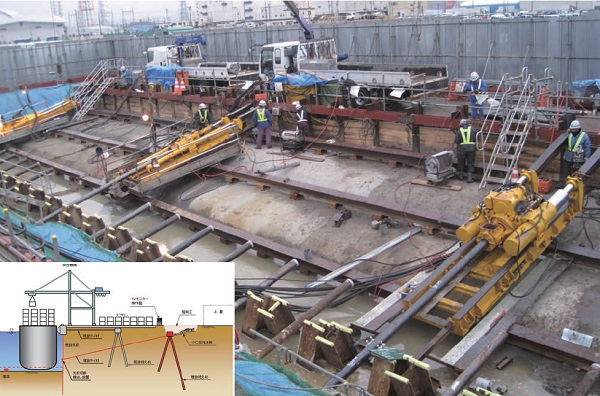 |
|
・Takeki Hirabayashi (SHIMIZU CORPORATION) |
| In an urban region, there is the case that the flow of underground water is obstructed. On this account, measures to maintain the flow of underground water are demanded. This method is a technology to cut the pass hole of earth-retaining walls with abrasives slurry jet. And it can reduce a work period and the costs of measures constructions. As for the technology, maintenance and the recovery of the authority of water function for the long term are possible. It can contribute to superior underground water flow maintenance measures greatly. |
| 4.Technological Development for Deepening / Seismic Enhancement of Existing Quay Walls in Operation (DUAL ANCHORED SHEET PILE WALL METHOD) |
 |
|
・Toyoaki Sugawara (Tohoku Regional Development Bureau, Ministry of Land, Infrastructure, Transport and Tourism) |
| Dual Anchored Sheet Pile Wall Method is the efficient, safe and reliable renewal technology that enables to enhance existing quay walls – in demand for deeper draft and/or higher seismic performance – without impeding vessel berthing and cargo handling. It utilizes existing structural members (sheet piles, tie-rods, anchorages) and the process consists of i) new anchorage installation behind, ii) down-gradient drilling by high-accuracy small-dia. drilling machine, and iii) underwater fixing of new tie-rods to sheet piles, thus creating an integrated dual-anchor system. Its enhanced seismic performance was prominently demonstrated during Tohoku Pacific Ocean Earthquake, that ensures the technology is promising in future improvement of port facilities for growing international marine transport. |
| 5.Earthquake Early Warning System for Shinkansen |
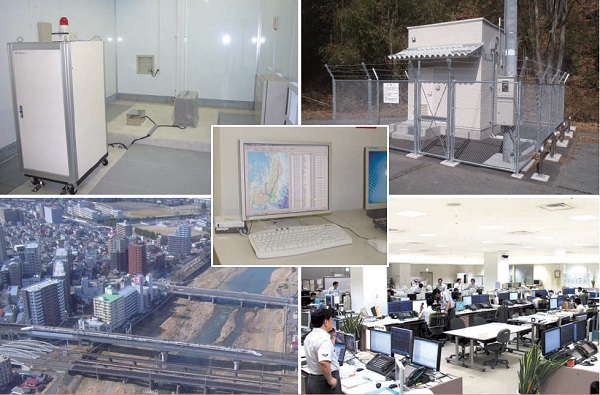 |
|
・Itsuki Koshiishi (East Japan Railway Company) |
| An earthquake early warning (EW) system for Shinkansen train has been in operation since Tohoku and Joetsu Shinkansen began service, with the purpose of improving safety of train operation against earthquakes. The current EW system was completed at the opening of Shin-Aomori extension of Tohoku Shinkansen in December 2010, after six increases in the number of seismometers and modification of the system. The EW system has realized to issue an early warning to adequate areas by estimating an earthquake epicenter and magnitude from first break tremor using optically networked seismometers; 81 of the seismometers located along Shinkansen lines, and 16 of the seismometers located along coastlines. In the event of the 2011 off the Pacific coast of Tohoku Earthquake, thanks to the EW system, all commercial Tohoku Shinkansen trains stopped safely. The development of EW system contributes to the improvement of safety of high speed Shinkansen operation and makes enormous social contributions. |

